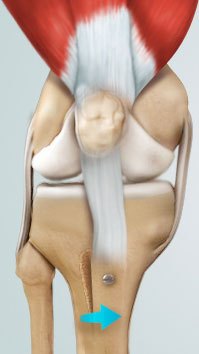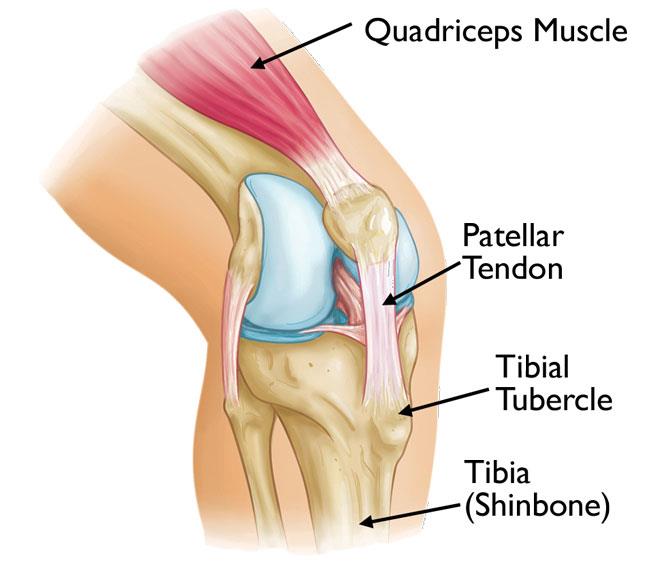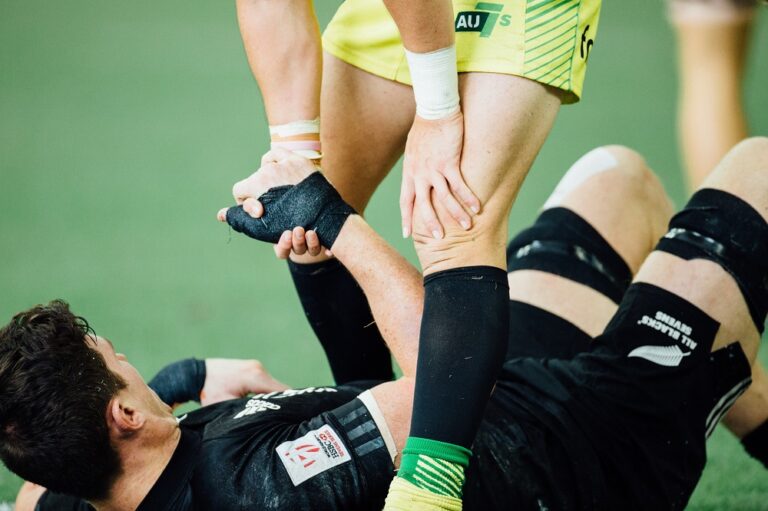Should MPFL reconstruction be paired with an osteotomy?
The SHYFT Research Study: SHould You transFer the Tubercle?
Medial patellofemoral ligament (MPFL) reconstruction is a successful operation used to stabilize the kneecap in patients with patellar instability.
MPFL reconstruction uses one of your tendons to reconstruct the injured ligament that attaches to your kneecap.
Traditional treatment of patellar instability has often included moving the tibial tubercle in combination with the MPFL reconstruction. The tibial tubercle is the bony bump on the upper part of the shin where the patellar tendon attaches to the quadriceps muscle.

This extra procedure is known as a tibial tubercle osteotomy (TTO). It involves cutting the bone with the tendon still attached and moving it to realign the tibial tubercle so that the patellar tendon is below your kneecap.
Moving the tibial tubercle medially (towards the inside of your leg) treats patellar instability by decreasing the lateral (sideways) pull on the kneecap. This helps the kneecap move in a more correct line and makes it less likely to dislocate.
WATCH a short video to learn more about a Tibial Tubercle Osteotomy (TTO)
It is not clear, however, whether the TTO procedure is necessary to get the best outcomes after MPFL surgery.
Hence, this study is designed to look at whether adding the TTO to the MPFL reconstruction results in any differences in quality of life and function compared to MPFL reconstruction alone in patients with patellar instability.
What is the goal of this study?
The goal of the SHYFT study is to compare outcomes (function, strength, range of motion, and quality of life) between patients who receive a MPFL reconstruction compared to patients who receive a combination of an MPFL reconstruction and a transfer of their patellar tendon.
Who is eligible for this study?
If you have been referred to the Banff Sport Medicine Clinic due to your unstable kneecap and are between 13 to 30 years old, one of our experienced patellofemoral Orthopaedic Surgeons will check to see if you are a potential candidate for the SHYFT study.
The surgeon will assess your knee to determine if you require MPFL surgery to stabilize your kneecap.
If you are eligible, your surgeon will ask if you would like to receive some more information from our research team.
What’s involved in participating in this research?

Some of the main activities involved in the study include:
- Standardized knee examinations for patellar instability, imaging such as CT, MRI, and X-Ray, completion of questionnaires
- Randomization (like tossing a coin) to one of two groups:
- MPFL reconstruction
- MPFL reconstruction + TTO
- Strength testing and hop and jump tests to measure your knee function and how well you are recovering
- Regular clinical study visits at the Banff Sport Medicine Clinic for 2 years of follow-up
Please know that your participation in this research study is completely voluntary!
What are the benefits of participating in this study?
If you agree to participate in this study, there may or may not be a direct medical benefit to you.
Your condition may be improved during this study because of the surgery to stabilize your kneecap, but there is no guarantee that this research will help you.
However, the information we get from this study may help surgeons and physiotherapists learn which surgery method will provide the best outcomes with the lowest chance for re-injury for people with a dislocating kneecap.
Learn more about clinical research and why our clinicians participate in studies








